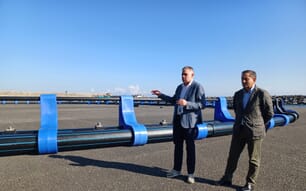Agriculture Secretary Proceso J. Alcala said about 180 metric tons of tuna were initially unloaded by three carrier vessels at the Gen. Santos City fish port, from 17 - 18 October, based on reports by the Department of Agricultures Bureau of Fisheries and Aquatic Resources (DA-BFAR).
With this favorable development, the countrys tuna production will recover, said the DA chief, during the October 18 culminating programme of the 2012 World Food Day celebration, at the Quezon City Memorial Circle.
For his part, BFAR Director Asis Perez said they expect Filipino tuna commercial fishing operation to go full blast by November, with the 36 Philippine-registered fishing vessels deployed at the said Pocket 1. Each vessel is estimated to catch an average of 20 MT a day.
He said the Western and Central Pacific Fisheries Commission (WCPFC) has granted the Philippines access to fish in Pocket 1 of the Pacific Ocean up to 28 February, 2013. The Philippines through the DA-BFAR seeks an extension of the fishing access in the same area, as the countrys tuna fishing vessels are compliant to the stringent requirements imposed by the WCPFC, Mr Perez said.
The High Seas Pocket 1 is the area bounded by the Exclusive Economic Zones of the Federated States of Micronesia to the north and east, the Republic of Palau to the west, and the Republic of Indonesia and the Independent State of Papua New Guinea to the south.
Mr Perez said the countrys annual tuna production dropped by 30 percent when the WCPFC imposed a ban at Pocket 1, on 1 January, 2010 until April 2012, aimed at conserving and allowing tuna species to propagate.
For October and through the remaining four months until 28 February, 2013, Perez said Filipino fishermen could catch at least 12,000 MT of tuna species, mainly skipjack.
Currently, five fresh/chilled tuna catcher vessels are operating in the area. Three vessels have complied with all the stringent requirements of the WCPFC as well as the Fisheries Administrative Order No. 145 Series of 2012.
The other remaining vessels are now completing other requirements which include the installation of transponders, use of appropriate mesh size, hiring of fishery observers, provision of catch log sheets, and filing of the necessary notifications, among others.
The favourable development, added Perez, would again spur economic activity in Southern Mindanao, particularly in General Santos City, the countrys major hub for trading of fresh tuna for local and export markets, and tuna canning and processing, that together employ and provide livelihood to thousands of fishermen and factory workers.
Secretary Alcala commended Director Perez and the DA-BFAR men and women who exerted efforts in securing approval of the WCPFC to grant the Philippines access to fish in the Pacific Ocean.
BFAR did its homework well, the DA chief said.
During the last four years, from 2008 to 2011, the countrys annual catch of tuna continued to decline, according to the DAs Bureau of Agricultural Statistics (BAS). The total tuna production of 636,809 metric tons in 2008 shrunk by about 21 per cent totaling to only 503,733 metric tons in 2011, the BAS said.
Tuna Catch to Pick Up Once Again
PHILIPIINES - The countrys tuna production is expected to increase this last quarter of 2012 through February 2013, as Filipino fishermen were recently given access to fish in the so-called High Seas Pocket 1 or HSP-1 of the Pacific Ocean.
by Lucy Towers




